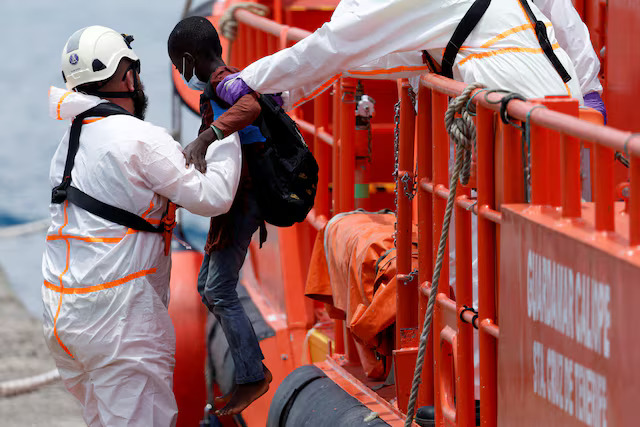Spanish lawmakers have approved a new plan to help thousands of underage migrants who are currently living in crowded centers, mainly on the Canary Islands. These centers are struggling to handle the large number of young migrants arriving in recent years.
The Canary Islands, located off the northwest coast of Africa, are currently hosting more than 6,000 migrant children and teenagers. In the nearby Spanish enclave of Ceuta, over 800 underage migrants are staying in similarly poor conditions. Many of these centers are overcrowded and do not meet proper living standards.
Even though the number of irregular migrants has dropped by 28% in 2025 compared to last year, the impact of the 2024 migration peak is still being felt. Spanish law states that children under 18 who arrive alone must receive protection and care from the government.
Angel Victor Torres, Spain’s Regional Minister, said the number of young migrants arriving without parents or guardians has more than doubled in the past three years. He called the situation both a humanitarian concern and a future opportunity. “These children will become part of our economy and culture. Let’s invest in their future,” he told lawmakers.
What does the relocation plan include?
The new plan will move underage migrants from overcrowded centers to other regions across Spain. Youth Minister Sira Rego said the plan may start this summer. It considers factors like population size, average income, unemployment rates, and how many underage migrants each region is already caring for.
By the end of March, each of Spain’s 17 regions had to report how many minors they were currently supporting and how many more they could help. This information was used to create the relocation strategy.
Torres reminded lawmakers that while the crisis is hitting the Canary Islands, Ceuta, and Melilla now, any other part of Spain could face the same situation in the future.
Why is this urgent?
The Atlantic route many migrants take to reach Spain is one of the most dangerous in the world. Migrants often travel in fragile boats or rafts that can easily capsize in rough seas. This makes it even more urgent to act quickly and improve care for those who survive the journey.

